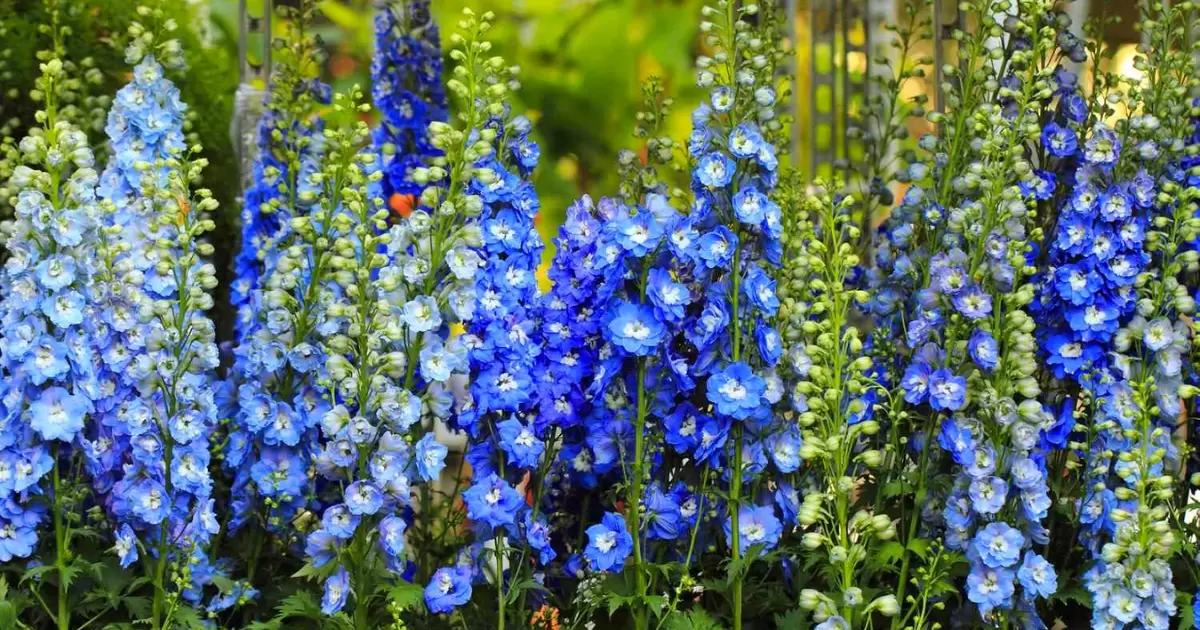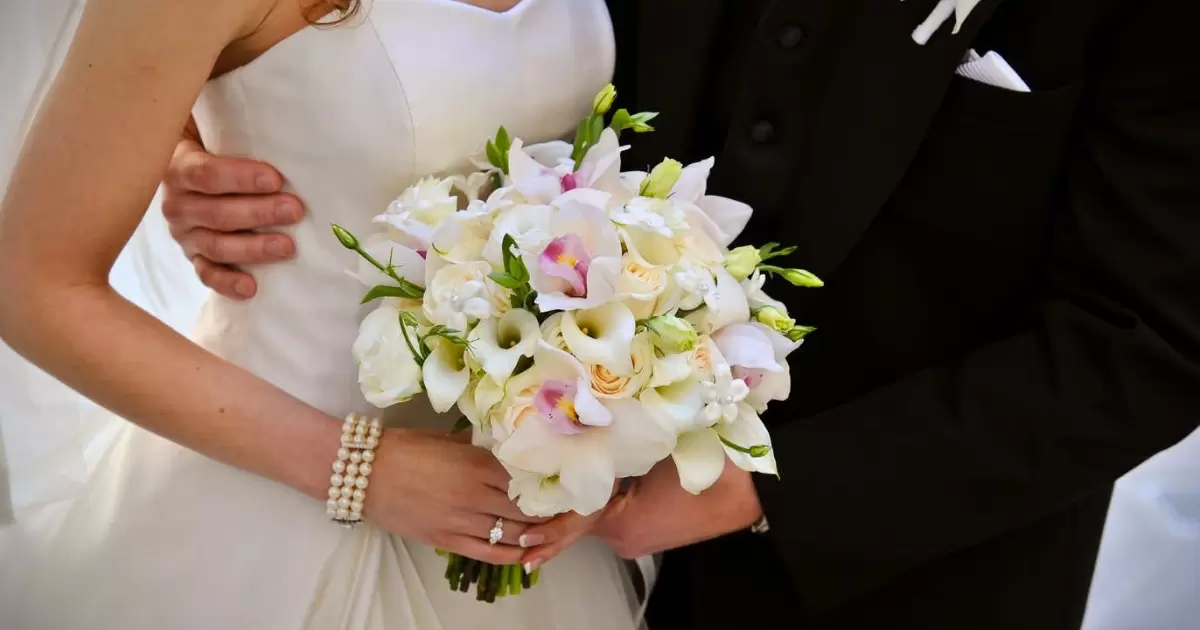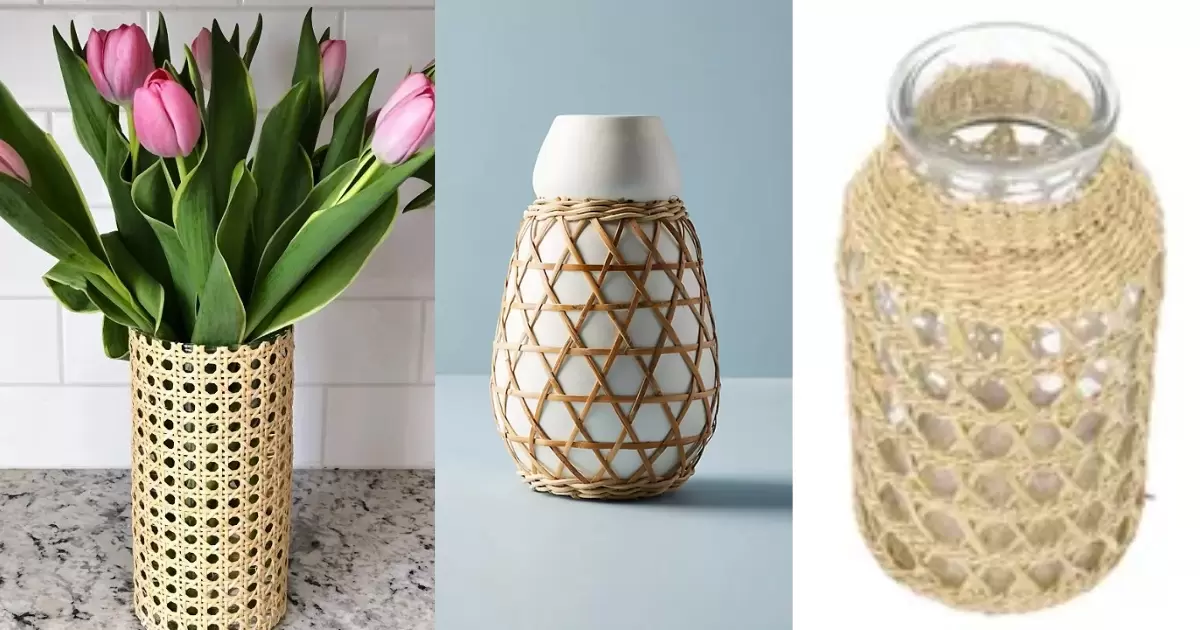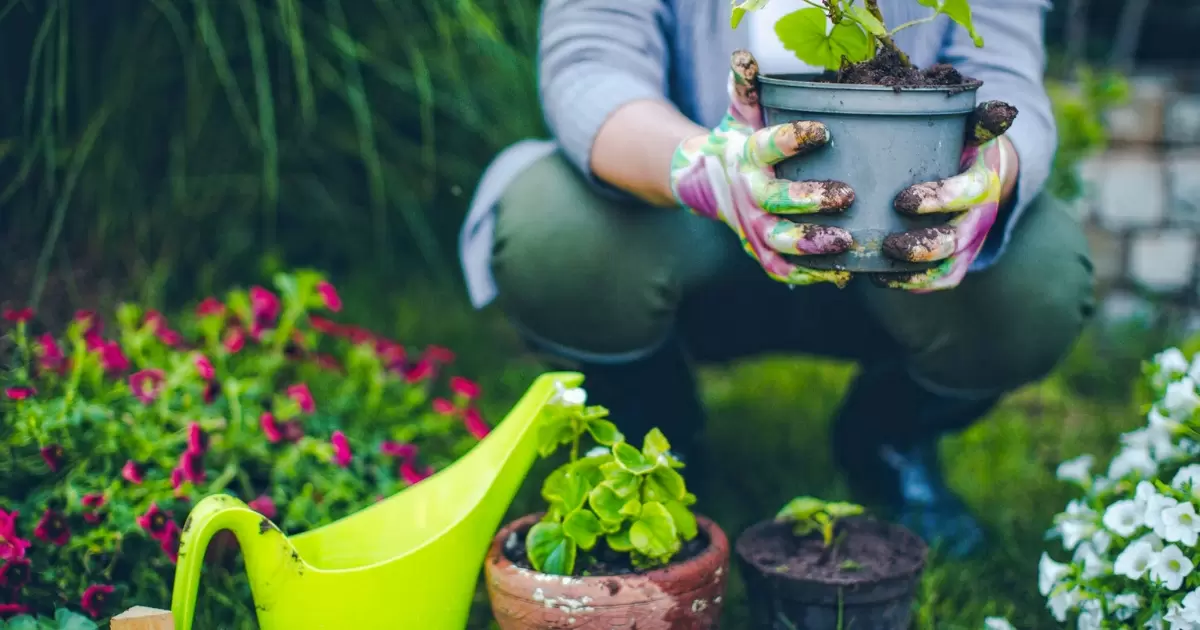Delphiniums are tall, stately flowers that bloom in shades of blue, purple, white, and pink. They prefer cool climates with full sun and well-draining soil. Plant them in early spring after the last frost. Water them regularly and provide support stakes as they grow taller.
Dazzling spires of blue, purple, or white reach for the sky. These towering beauties are delphiniums, a favorite among gardeners. Want to grow and care for delphinium flowers? It's easy with the right conditions.
Delphiniums thrive in cool climates with full sun exposure. Prepare the soil by mixing compost or fertilizer. Space the plants about 2-3 feet apart. Water them regularly, especially during dry spells. Follow these simple steps for a stunning display.
Delphinium Care
Caring for delphiniums involves planting them in well-drained soil and a sunny area. Keep the soil moist, but not soggy, and provide support for tall varieties.
Light
Delphiniums thrive in full sun, so plant them in a spot where they can soak up plenty of sunlight throughout the day. This helps them grow strong and produce vibrant blooms. If your area experiences intense heat, providing some afternoon shade can help protect the plants from scorching.
Soil
Delphiniums prefer well-drained soil that is rich in organic matter. Ensure the soil is loose and friable to allow for good root development and drainage. A slightly acidic to neutral pH level, around 6.0 to 7.0, suits them best. Incorporating compost or well-rotted manure into the soil before planting can help provide essential nutrients and improve soil structure. Avoid heavy clay soils that retain water, as this can lead to root rot.
Water
Delphiniums need consistent moisture to thrive, but they don't like to sit in waterlogged soil. Water them deeply whenever the soil feels dry to the touch, typically about once or twice a week, depending on the weather conditions. Aim to water at the base of the plant to avoid wetting the foliage, which can invite disease. When to cut snapdragons for a vase? Mulching around the base of the plant helps retain soil moisture and reduces the frequency of watering.
Temperature And Humidity
Delphiniums prefer cool to moderate temperatures and can withstand a range of climates, depending on the variety. They generally thrive in areas with mild summers and cool nights. While they can tolerate some humidity, excessive moisture can lead to fungal diseases, so ensure proper air circulation around the plants. In regions with high humidity, planting them in well-drained soil and providing adequate spacing between plants can help mitigate the risk of fungal problems. If grown in hotter climates, providing afternoon shade can help protect them from heat stress.
Fertilizer
Delphiniums benefit from a balanced fertilizer applied in spring as they begin to grow. Choose a fertilizer with equal parts nitrogen, phosphorus, and potassium, or a formulation specifically designed for flowering plants. Apply the fertilizer according to the package instructions, usually sprinkling it around the base of the plant and then watering thoroughly.
Types Of Delphiniums
Delphiniums come in various types, including Pacific Giants, Magic Fountain, and New Millennium hybrids. Pacific Giants are known for their tall spikes of large, vibrant flowers in shades of blue, purple, pink, and white.
Candle delphinium (Delphinium elatum)
The Candle Delphinium is a tall, striking variety of delphinium. It produces dense spikes of vibrant blue or purple flowers. This type grows up to 6 feet tall. The blooms appear in early to mid-summer. Plant Candle Delphiniums in full sun and well-draining soil. Stake the stems as they grow for support.
Carolina larkspur (Delphinium carolinianum)
The Carolina Larkspur is a delicate, native North American species. It produces loose spikes of bright blue flowers. This variety typically grows 2-4 feet tall. The blooms appear in spring to early summer. Plant Carolina Larkspurs in partial shade and moist, well-draining soil. They make excellent additions to wildflower gardens.
Chinese delphinium (Delphinium grandiflorum, D. chinense)
The Chinese Delphinium is a shorter, more compact variety. It produces dense spikes of vibrant blue, white, or purple flowers. This type grows 1-3 feet tall. The blooms appear in early to late summer. Plant Chinese Delphiniums in full sun and well-draining soil. They make excellent additions to borders or containers.
Delphinium x belladonna
|
Characteristic |
Description |
|
Other Names |
Belladonna Delphinium, Delphinium x belladonna hybrid |
|
Height |
3-5 feet tall |
|
Flower Color |
Shades of blue, purple, white |
|
Bloom Time |
Early to late summer |
|
Sun Exposure |
Full sun |
|
Soil |
Well-draining, fertile |
|
Uses |
Cut flowers, borders, backgrounds |
|
Special Notes |
Excellent for cutting, sturdy stems |
Tall larkspur (Delphinium exaltatum)
The Tall Larkspur is a towering species of delphinium. It produces loose spikes of blue or white flowers. This variety can reach up to 8 feet tall. The blooms appear in mid to late summer. Plant Tall Larkspurs in full sun and moist, well-draining soil. Provide strong support for the tall stems.
Pruning
Pruning delphiniums is important. Remove faded flower spikes after blooming. Cut back stems to the ground in fall. This encourages fuller growth next season. Prune out any dead or damaged stems in early spring. Divide and replant every 3-4 years for vigorous plants.
Growing Delphinium From Seed
Delphiniums can be grown from seed. Start seeds indoors 8-10 weeks before the last frost date. Use a sterile seed-starting mix. Sow seeds on the surface and press in. Keep the soil moist and provide bright light. Transplant seedlings outdoors after they have hardened off.
Space delphinium seedlings 1-2 feet apart in full sun. Prepare the planting area with compost-enriched soil. Water regularly until plants are established. Provide support stakes as plants grow taller. With patience, you will be rewarded with gorgeous blooms.
Overwintering Delphinium
Delphiniums are perennials in many climates. They need special care to survive cold winters. After the first hard frost, cut stems back to the ground. Cover the crown with a thick mulch layer. Use straw, leaves, or evergreen boughs.
In early spring, remove the mulch gradually. Allow new growth to emerge naturally. Add compost or fertilizer around plants. Water regularly as growth resumes. With proper overwintering, your delphiniums will return year after year.
How To Get Delphinium To Bloom
Delphiniums need specific conditions to bloom well. They require full sun exposure for at least 6 hours per day. Provide rich, well-draining soil with plenty of organic matter. Water plants regularly during the growing season. Apply a balanced fertilizer in early spring.
Deadhead spent flowers to encourage more blooms. Stake tall varieties to support the heavy flower spikes. With the right care, delphiniums will reward you. Enjoy their stunning colors and towering presence in your garden.
How to Create Stunning Displays with Delphinium Flowers in Vases and Bouquets?
Delphiniums make excellent cut flowers for indoor displays. Cut stems in the morning when buds are just opening. Strip off the lower leaves. Place the stems in clean water immediately. Arrange delphiniums in tall vases or containers.
Add contrasting colors and textures for visual interest. Combine delphiniums with roses, peonies, or lisianthus. Their tall spikes provide height and drama. Change the water regularly to extend the vase's life. With their vivid colors, delphiniums elevate any floral arrangement.
Common Pests And Plant Diseases
Delphiniums can be susceptible to several pests. Aphids, spider mites, and thrips may infest the plants. Check for these insects regularly. Use insecticidal soap or neem oil for control. Snails and slugs also enjoy munching on delphinium leaves and flowers.
Plant diseases like powdery mildew, leaf spot, and root rot can affect delphiniums. Provide good air circulation and avoid overhead watering. Remove and destroy any infected plant material. Apply fungicides if necessary to prevent further spread.
Delphinium Toxicity
Delphiniums contain toxic compounds called alkaloids. All parts of the plant are poisonous if ingested. Children and pets are at risk of illness. Symptoms include vomiting, dilated pupils, and nervous system issues. Exercise caution when growing these beautiful blooms.
Use gloves when handling delphiniums. Wash your hands after working with the plants. Keep delphiniums away from vegetable gardens. Avoid planting them where children or pets play. With proper precautions, you can safely grow delphiniums.
Frequently Asked Question
How do you maintain delphiniums?
Remove faded flowers to encourage more blooms. Divide plants every 3-4 years to rejuvenate them.
Where do delphiniums grow best?
Delphiniums thrive in cool climates with full sun. They prefer well-draining, fertile soil enriched with compost.
Do delphiniums like sun or shade?
Delphiniums need at least 6 hours of direct sunlight per day. They may tolerate partial shade in hot summer climates.
What is the best fertilizer for delphiniums?
Use a balanced, slow-release fertilizer in early spring. Supplement with a water-soluble fertilizer during blooming.
Conclusion
Delphiniums reward patient gardeners with stunning floral displays. Grow them from seed or established plants. Provide ideal conditions for the best results. Enjoy their towering spires season after season. With proper care, these beauties will bloom annually. Remove spent flowers and stake tall stems.
Protect plants over the winter for spring revival. Create gorgeous bouquets with vivid delphinium blooms. Follow spacing, sun, soil, and water recommendations. Take precautions due to plant toxicity. Experience the magic of delphinium flowers. Their striking colors elevate any garden space.
.png)












